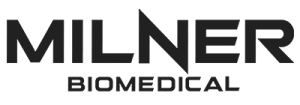In June I published an article on the real cost of sports injuries as I watched processional sports men & women drop like flies! It was horrible to see this spike in injuries plaguing sports following COVID19.
In July 1 in 5 NRL players were out injured. 90 players by July! One month back from lockdown enforcements. A 4 week detaining period that saw no team training, no matches & a substantially reduced training capacity for most athletes & people. While this common trend of increasing injuries wasn’t limited to athletes, allied health professionals saw a close to 50% increase in overuse, RSI & soft tissue injuries in clinical practice, some even more.
At that time we had seen a three fold increase in soft tissue injuries in professional sports in Europe & Australia due to a forced detaining period & a less than optimal lead into a season for athletes. Load management is a huge component in any sports prep. Adaptation should take time & not rushed, too much too soon, is a real thing. Especially when you are not recovering to full capacity or the best of your ability, while being required to play at full capacity.
At 5 weeks into the English premier league season there have been 78 reported muscle injuries, a 42% increase from the previous campaign, that at that time had experienced an undisturbed off & pre season. A common trend from the NRLs return as the EPL suffered a significantly shorter off season. EPL seasons usually run for close to 40 weeks, around 38 games. If at 5 weeks in, we are at 78 (reported) injuries & a 42% increase from last season, & the likelihood of injury commonly increases as the season advances due to the volume of work & minimal rest & recovery, how high will this injury toll go!?
Where will these next season lead us in injury numbers? At this rate, the numbers will reach an all time high, putting players at a higher risk of injury, some that may affect them for a long period of time, putting large strain on the players, team & franchise.
& what does this cost us? I’ll tell you what it costs… the capital of these sporting franchises! The players.
In a recent article published by BMJ Open Sport & Exercise Medicine in March 2020, an average English Premier League (EPL) team lost approximately £45 million per season due to injury related decrements in performance. This estimation is based on the assessment of the team’s underachievement due to injured players (£36 million) & on a direct calculation of salaries paid to injured players (£9 million).
Therefore A 42% increase in injuries could potentially see this number climb to close to £64 million in 2021 if continuing on this path.
At the conclusion of the 2020 NRL season, there will be close to 70 first grade players sidelined with season ending injuries & the potential for a late return to the 2021 season, or their entire off season spent undertaking rehabilitation Instead of prepping for the upcoming season.
What can we do to help reduce the risk of sidelining, time loss injuries… adopting proven recovery & performance sports medicine technology to work in synergy with tried & proven methods of sports recovery & performance.
With all variables accounted for across sporting departments, optimised & tested, what else can we do to slow or prevent this? Recovery systems! Physio, S&C, high performance, medical, podiatry, sport science, nutrition, soft tissue & more are all accounted for & have their outcome requirements, programs, standards & goals. So how do you implement recovery systems to compliment these areas to improve the effectiveness & outcomes, implementation of sports medicine technology across all these areas? Inject them into all areas to boost their effectiveness & efficiency.
Medical professional owned & operated, Milner Biomedical understand the importance of implementing these systems into sporting practice. Proven methods used on elite athletes from all over the world across multiple disciplines experiencing the benefits with literature to enforce the nitty gritty sometimes confusing scientific side, but with continued on going studies dating back decades, the methods are proven to work. These tools are available to us & have been since around the 1960-1980’s. Why are they not as prevalent in professional sports? Not enough evidence? Dive deeper, the proven literature is there.
Point & example, the SAN Fran 49ers, one of the worlds largest sporting franchises have built a dedicated laser/light recovery room in their training facility, the top level understand the benefits of sports medicine technologies. They understand that longevity & recovery of their athletes is paramount in performance, but also injury prevention.
“Light/Laser therapy allows us to provide a players body with an extremely valuable resource that is proven to support the body’s natural inflammation process, increase cellular regeneration & aid in sleep optimization, three main aspects of recovery that ensure our players are at their best for gameday”
– 49ers Director of functional performance, Elliot Williams
These are just three valuable benefits of laser therapy, its application on reducing the onset of fatigue, increase joint mobility, wound/muscle tear healing, pain, nerve damage, blood flow, DOMS are just a few more. Laser isn’t new to the professional sporting teams in The United States, Los Angeles Angels, Los Angeles Clippers, Toronto Blue Jays, Boston Celtics, Detroit Tigers, Miami Dolphins & The New York Jets are just a few more.
Are your systems the best they can be?
- Tony Williams, Manly Sea Eagles NRL player & Australian representative NRL Player



